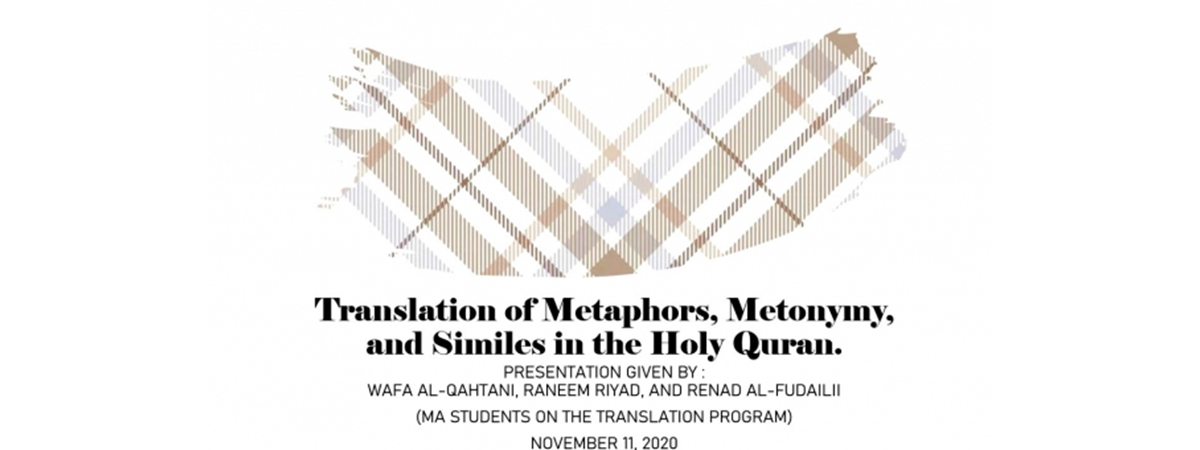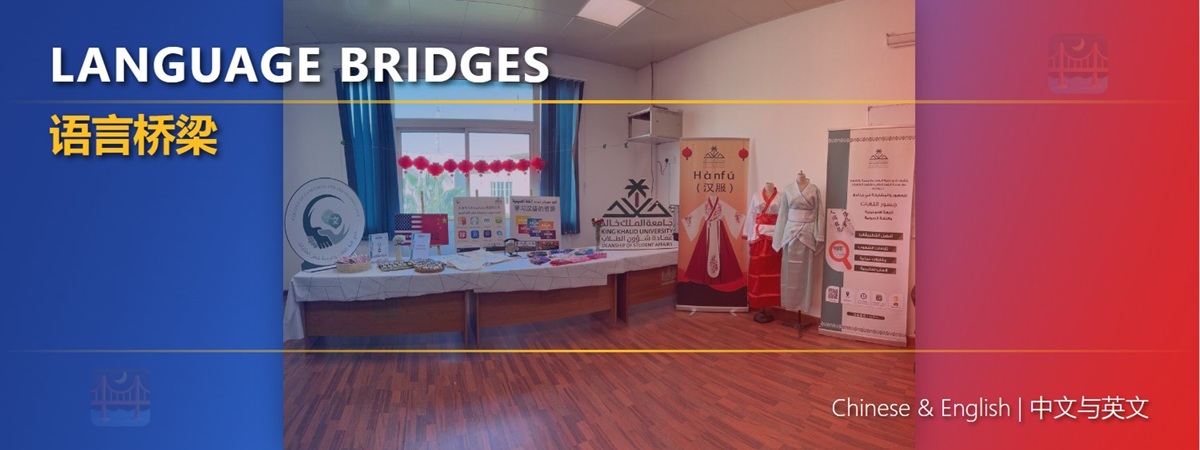
Translation of Metaphors, Metonymy, and Similes in the Holy Quran
Echoes of Meaning: Translating the Quran's Eloquence
Navigating Rhetorical Features in Sacred Text
On November 11, 2020, the Language Research Center (LRC) hosted a webinar that brought together second-year Translation students, Wafa Al-Qahtani, Raneem Riyad, and Renad Al-Fudailii. Titled "Translation of Metaphors, Metonymy, and Similes in the Holy Quran," the event facilitated a deeper understanding of the complexities involved in rendering the sacred text into English, given the lexically rich and unique linguistic features of its classical Arabic composition. Dr. Ismail Alrefaai, Director of the LRC, and Dr. Eyhab Bader Eddin MCIL CL MITI, extended their sincere appreciation to the students for their insightful contributions.
The students underscored the immense challenges translators face when attempting to translate the Quran's rhetorical features or tropes. The discussion revolved around three key tropes – Metonymy, Simile, and Metaphor.
Al-Qahtani commenced the session by delving into Metonymy. She elucidated its etymological roots along with pertinent examples. She emphasized that Metonymy, a pivotal figure of speech, plays an indispensable role in accurately conveying specific messages in the Holy Quran. By juxtaposing various Quranic translation examples, she accentuated the degree to which translators upheld Metonymy in translating Quranic verses.
Understanding Key Rhetorical Features
Metonymy
Conveying meaning through close association or substitution.
Riyad shifted the focus to the translation of Similes in the Holy Quran. After defining the term and illustrating it with an example, she explained how Simile, a figure of speech, clarifies and augments an image by likening one thing to another. She discussed ambiguity encountered in translating certain words that might perplex English readers or non-native Arabic speakers, and how the actual meaning is often lost or inadequately expressed in such translations.
Simile
Clarifying an image by explicit comparison (like/as).
Al-Fudailii concentrated on Metaphors, defining the term and providing an example. Metaphors, she posited, are figures of speech where one thing is described in terms of another. Comparing two versions of Quranic translation, she identified the version that accurately conveyed the metaphorical sense.
Metaphor
Describing one thing directly as another to imply likeness.
Striving for an Honest Transfer of Meaning
The presenters concluded by acknowledging the immense challenges involved in translating the Holy Quran. The task is especially daunting considering the need for an honest transfer of meaning and the fact that many Arabic words lack precise English equivalents. The webinar was undeniably informative and successful, drawing active participation from both male and female faculty members as well as students.
Commitment to Student-Centered Professional Development
The College of Languages and Translation's Master of Arts in Translation program remains committed to offering student-centered professional development activities. These initiatives align with program learning outcomes and reflect current labor market trends.
